INDIANA, USA — May is a busy month for Indiana, not just thanks to the Indianapolis 500, weddings, proms, and marathons, but also due to the weather. Severe weather season is in full swing, and more daylight is being added. If you are planning something in May, what kind of weather can you expect in Indiana?
Tap HERE to track any incoming rain or storms with our interactive radar.
Lots of things to cover, like daylight, rain, snow, temperatures and severe weather. We'll start with daylight because that is the main driver for weather changes through the month of May. Winter fully ends, and spring/summer weather mostly takes control.
How much daylight do we add in May?
The farther north you go, the bigger the daylight gains are. They lost the most during the winter, so they have the most to gain. Most of the nation is gaining between a half hour to a full hour of daylight from May 1 to May 31. May is the last full month for gaining daylight. Starting June 21, we start to slowly lose it again at the summer solstice.

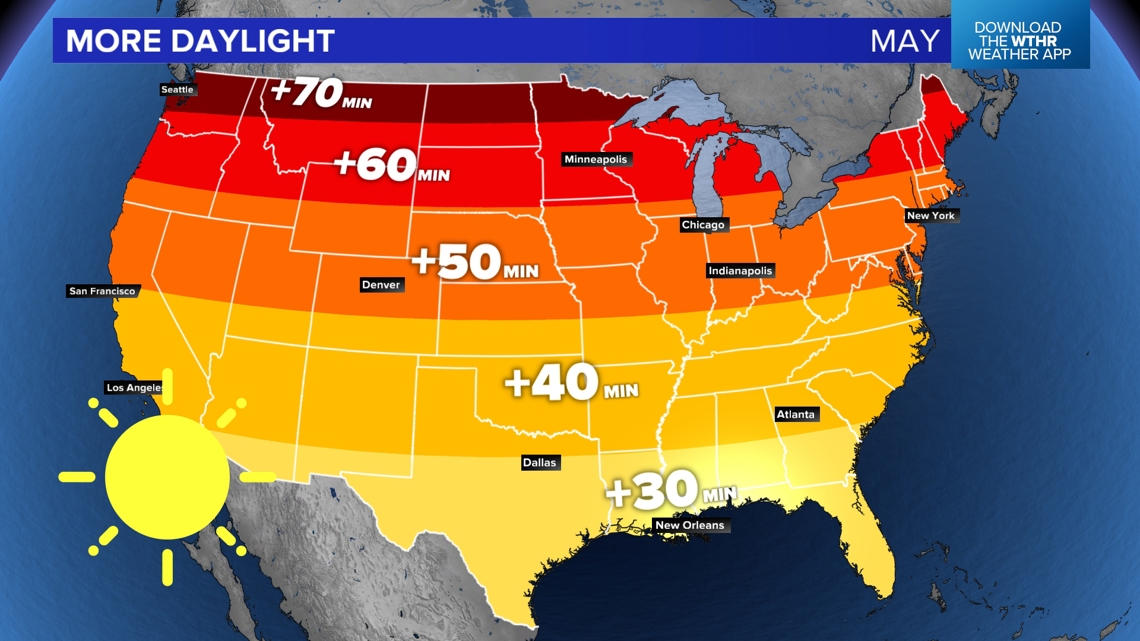
(Note: The color bands highlight how much you will at least gain by May 31.)
Specifically in Indiana, we gain about 50 minutes or so of daylight. Northern Indiana gains just under a full hour, while southern Indiana gains 49 or 50 minutes.

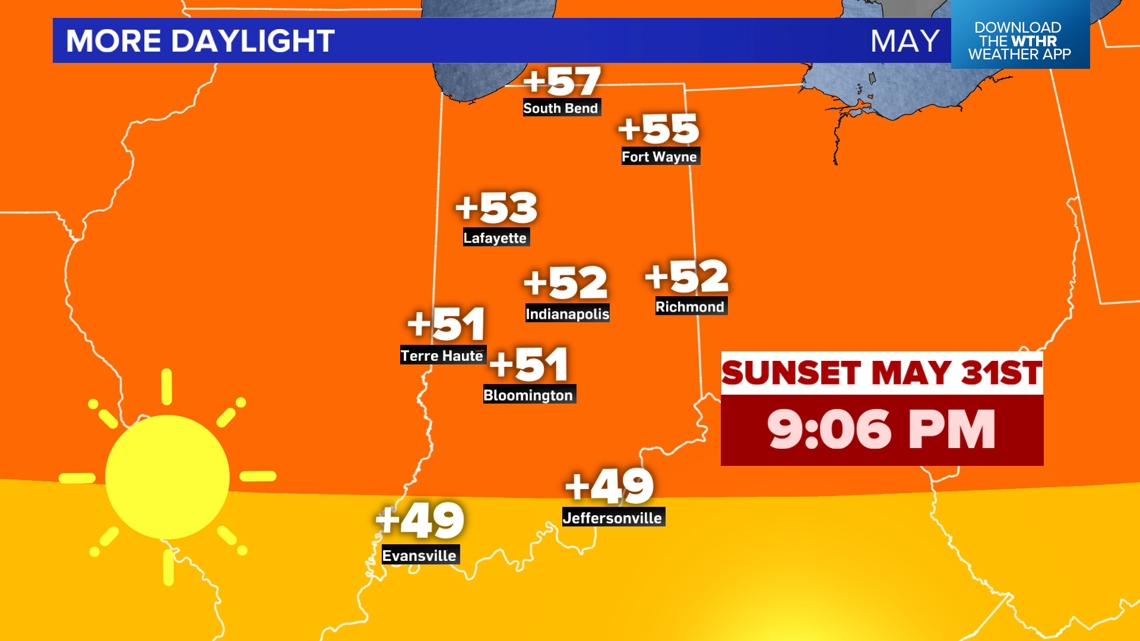
How much rain can I expect?
May is our second wettest month. We can get many rainy days, but also thunderstorms can bring heavier rounds, moreso than normal rain showers in other parts of the year. Generally, Indianapolis picks up 4.75" of rainfall. The beginning of the month trends wetter than the end of the month from a climate standpoint.
Can it snow in May?
While it is rare, it can snow in Indiana during the month of May, especially in northern Indiana.
When you look at a trace of snow or more, the last two times we have seen some snow in Indianapolis has been 2014 and 1989. Other locations have picked up a trace of snow in other years, too. What is not included are snow flurries. Many times we have had a May day that brought some light snowflakes in the air, it wasn't enough to do anything. Usually, these are very short-lived.


There is only a 5% chance for a trace of snow in central Indiana.
How much warmer do we get in Indiana?
May brings a decent boost to temperatures across the Hoosier state. Our average, highs start in the upper 60s and reach toward the upper 70s.

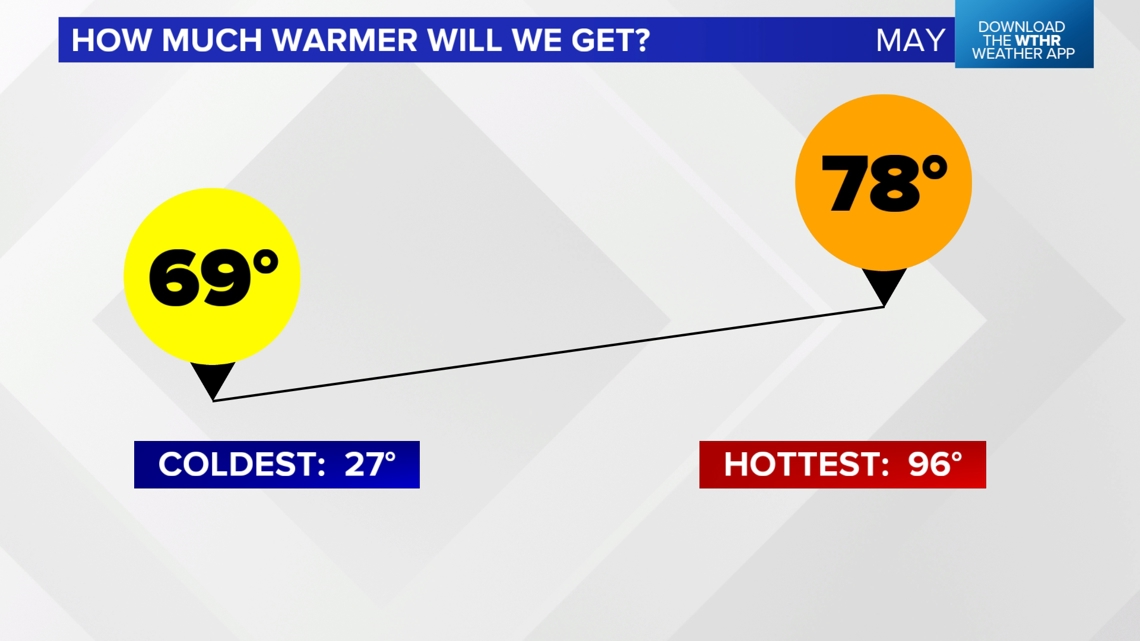
There will be several days warmer and colder than this range, but by the end of the month, we should start consistently aiming toward 80 degrees.

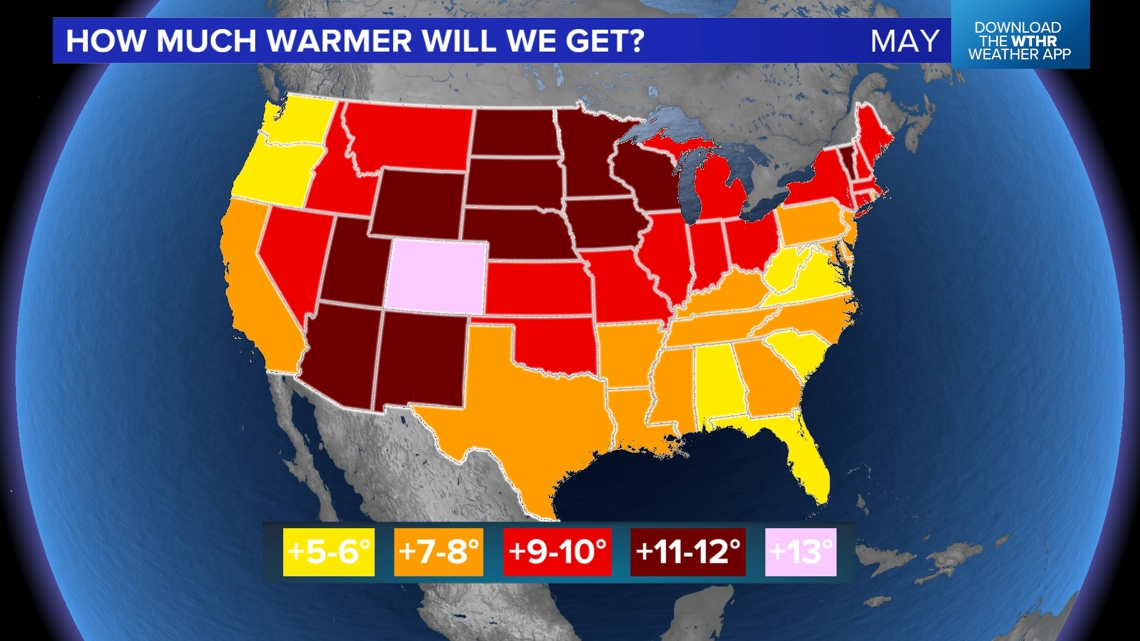
The biggest heat gains are in the center of the country. The Plains and eastern slopes of the Rockies can heat up and cool down faster than the rest of country, thanks to less ocean moderation and less vegetation to control temperatures.
What is the risk for severe weather like tornadoes?
May is Indiana's third biggest month for tornadoes on average (looking at data between 1950-2023). The bullseye for severe weather is in the Central Plains, but warm fronts can easily bring tornadoes to central Indiana.

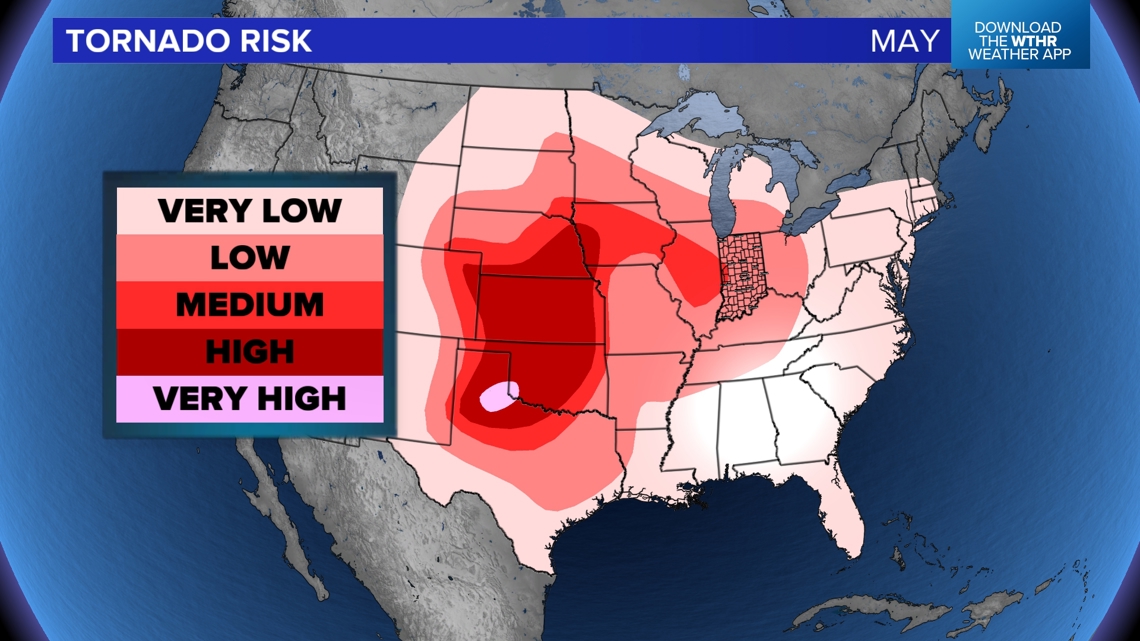
The highest chance for tornadoes is in western Indiana during the month of May.


June is Indiana's biggest tornado month (356 total in the past 73 years), followed by April (283 total in the past 73 years), then May (268 tornadoes in the past 73 years).
May is an active month. When it's busy, the weather can be extreme. But in between, expect some of the nicest weather of the year with lower humidity. The humid air really starts coming back in a big way during June.

